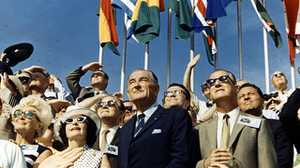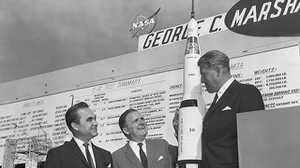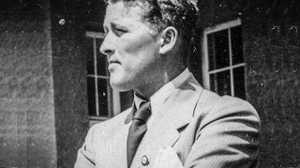From Moon Maids to Astronauts: How Feminists Transformed the Space Race
Protests taking place inside NASA’s Mission Control were only the tip of the iceberg.
By Neil M. Maher

"The Rise and Fall of Lunar Royalty," which American Experience has republished from the January 1974Texas Monthly, describes a remarkable protest that took place during the preceding summer inside NASA’s Johnson Space Center. A group of female workers became alarmed when the center announced it was holding a beauty pageant for the July 1973 Lunar Landing Festival in nearby downtown Houston. The concerned women snuck into the center at night and secretly replaced the original ballots, which listed 48 female employees, with fakes listing forty-five men, including the center’s director Chris Kraft and astronauts Rusty Schweickart, Pete Conrad and Deke Slayton. After the fake ballots were distributed the following day through the interoffice mail, the women snuck back into the center and taped a list of “winners” from their alternative pageant to every bulletin board and elevator bay in the complex. Feminist Gloria Steinem was listed as the write-in favorite.

The protestors also taped dozens of hand-drawn cartoons alongside their fake ballots. In “He’ll Giver Her Tha Moon,” a bathing-suited “Miss Moon Maid” standing on a “Height of Equality” pedestal suggested not only that women at NASA were judged according to their good looks and bodily figure but also that the space agency considered them only “3/4” equal to men. The cartoon’s caption, which read “Just About as High as She Can Go,” reaffirmed the perception of this glass ceiling at NASA.
Two additional cartoons placed the beauty queen on the lunar surface. In “One Giant Step For Mankind . . .” (seen above) Neil Armstrong’s boot steps on the back of the festival’s “queen,” while “Moon Maid” depicts a female astronaut holding a broom, mop, and trash can above the tag line “You’ve Come A Long Way Baby . . .” The message in these cartoons was loud and clear: the only way for women to get to the moon was as maids or doormats

Such protests taking place inside NASA’s Mission Control were merely the tip of the iceberg. During the early 1970s, second wave feminists from across the country held dozens of demonstrations protesting gender discrimination within NASA’s hiring practices as well as the space agency’s all-male astronaut corps. The National Organization for Women (NOW) spearheaded such activism, which included letter-writing campaigns to Congress, lobbying of NASA administrators, picketing outside the space agency’s Washington, D.C. headquarters and even feature-length exposés on the possibilities of female astronauts in Gloria Steinem’s Ms. magazine. NOW even placed NASA’s top administrator, James Fletcher, on its FBI’s Ten Most Wanted list. In this case, however, NOW’s “FBI” stood for “Feminist Bureau of Investigation.”
This activism by feminists eventually paid off when on June 18, 1983 Sally Ride became the first American woman to travel in space. One of NASA’s VIP guests for the launch was none other than Gloria Steinem. “Millions and millions of little girls,” Steinem explained after watching Ride soar into the sky high above Cape Canaveral, now understand that they, too, “can be astronauts, heroes and explorers and scientists.”

Neil M. Maher is a history professor at the New Jersey Institute of Technology and Rutgers University at Newark, where he teaches environmental and political history. He has written about the Johnson Space Center’s beauty pageant in his most recent, award-winning book, Apollo in the Age of Aquarius (Harvard University Press, 2017).







